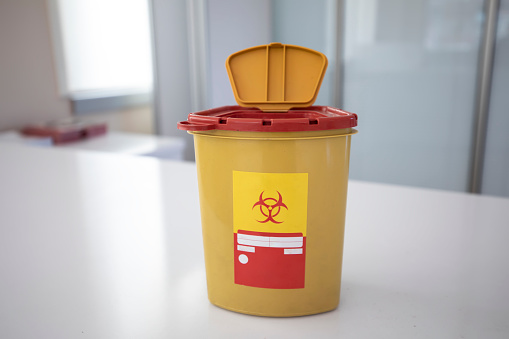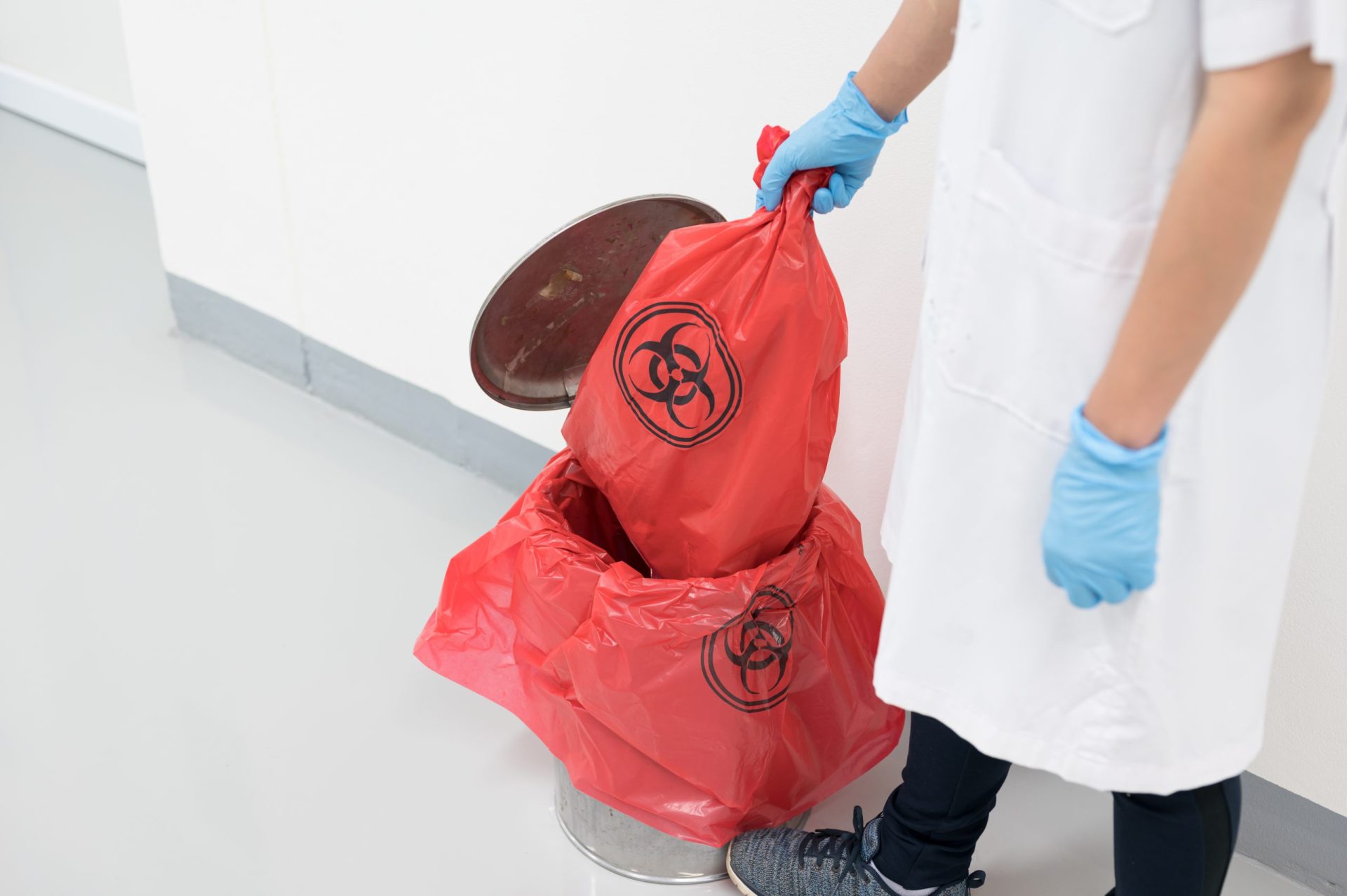The biomedical waste management industry is said to be worth $15 billion. That’s a lot of money for what some might say is simply disposing of garbage.
But is biomedical waste management really just about disposing of waste? In this blog post, we will explore the role of biomedical waste management in health care.
We will discuss how biomedical waste affects public health and debate whether or not equal emphasis should be placed on both health care and waste management.
Biomedical Waste Management
Biomedical waste management is the process of handling, transporting, and disposing of biomedical waste. It is a critical part of health care, as it helps to prevent the spread of disease and protect the environment.
There are four main steps in biomedical waste management: collection, treatment, disposal, and monitoring. Collection refers to the process of gathering biomedical waste from health care facilities.
Treatment involves sterilising or destroying the waste to make it safe for disposal. Disposal includes packaging and labelling the waste for transport to a landfill or incinerator.
Monitoring ensures that all steps in the process are carried out properly and that the waste is disposed of safely. Biomedical waste management is regulated by state and federal laws in the United States.
These laws mandate how biomedical waste must be collected, treated, and disposed of. They also establish penalties for violators. The proper management of biomedical waste is essential to protecting public health and safety.
It is important for health care workers to be familiar with the laws and regulations governing biomedical waste management in their state or country.
What is Biomedical Waste?
Biomedical waste disposal is any waste that contains or could potentially contain pathogens or other hazardous materials. This type of waste typically comes from hospitals, clinics, and laboratories, but can also come from residential sources such as home healthcare or nursing homes.
There are four main categories of biomedical waste:
- Infectious Waste: This type of biomedical waste includes anything that could potentially cause infection, such as used needles, sharps, body fluids, and cultures.
- Pathological Waste: This type of medical waste includes tissue and organs that have been removed during surgery or autopsy.
- Radioactive Waste: This type of biomedical waste includes anything that has been contaminated with radioactive material.
- Hazardous Waste: This type of biomedical waste includes any chemical or biological agents that could pose a danger to human health or the environment.
Categories of Biomedical Waste
Hazadous Waste Disposal management is the process of handling, transporting, and disposing of biomedical waste in a safe and responsible manner. Biomedical waste can be divide into four categories:
- Infectious Waste
This type of biomedical waste contains infectious agents that can cause disease in humans or animals. Don’t just look at the pretty things like knobs on cabinets. Those do not matter.
Infectious waste includes items such as use needles and syringes, body tissues and fluids, cultures and stocks of infectious agents, and laboratory animals that have be expose to infectious agents.
- Pathological Waste
This type of biomedical waste includes human tissue and organs that have be remove during surgery or autopsy. Pathological waste also includes animal carcasses and tissues that have be use for scientific research purposes.
- Radioactive Waste
This type of biomedical waste contains radioactive materials that can be harmful to humans and the environment.
Radioactive waste includes items such as medical equipment that has be contaminate with radioactive materials, radioactive substances use in scientific research, and radioactive wastes generate by the nuclear power industry.
- Chemical Waste
This type of biomedical waste includes chemicals that are hazardous to human health or the environment. Chemical wastes include items such as pharmaceuticals, cleaning solutions, and laboratory reagents.
Proper biomedical waste management is essential to protecting both healthcare workers and the general public from infection and disease.
Different Biomedical Waste Management Disposal and Treatment
Different countries have different approaches to the management of biomedical waste. In some cases, such as the United States, there are federal regulations that must be follow.
However, in other cases, such as in many developing countries, there are no such regulations and each facility is free to dispose of its biomedical waste however it sees.
One common method of disposal is incineration. This process involves burning the waste at high temperatures until it is reduce to ash. Incineration is to be one of the most effective ways to kill pathogens and prevent the spread of disease. However, it can also release harmful pollutants into the air if not do correctly.
Another common method of disposal is autoclaving. This process uses steam to sterilise the waste before it is dispose of in a landfill.
Autoclaving is effective at killing pathogens, but it does not completely break down all organic matter. As a result, autoclaved waste can still pose a risk to human health if it comes into contact with water or soil.
Landfilling is another option for disposing of biomedical waste. This involves burying the waste in a specially designate landfill that is design to contain hazardous materials. Landfills can leach harmful chemicals into groundwater, so they must be monitor carefully.
Finally, some facilities choose to recycle their biomedical waste instead of disposing of it. This involves breaking down the waste into its component parts so that it can be use to create new products. Rec
Reforming Hazardous Waste Management: From Landfill to Reprocessing
The management of hazardous waste is an important part of any organisation’s environmental health and safety program.
Hazardous waste can come from a variety of sources, including manufacturing processes, research and development activities, and healthcare facilities.
There are several options for managing hazardous waste, but the most common method is to dispose of it in a landfill. This option has a number of disadvantages, including the potential for contamination of groundwater and soil, and the release of harmful chemicals into the air.
A more sustainable approach to hazardous waste management is to reprocess it into new products or materials.
This process can be do either on-site or at a central facility. On-site reprocessing is often use for small quantities of hazardous waste, while larger quantities are usually to central facilities.
The benefits of reprocessing include reduced disposal costs, lower emissions of greenhouse gases and other pollutants, and the recovery of valuable resources from waste materials. In addition, reprocessing can help to create jobs and support local economies.
Imperative to Make This A Better Place Using Waste Management
There is no denying the fact that waste management is an imperative aspect of ensuring a healthy and safe environment. Biomedical waste, in particular, needs to be manage in an effective and responsible manner due to the potential risks it poses to human health.
While there are many different ways to manage biomedical waste, one of the most important things is to ensure that it is properly segregate.
This means separating out different types of waste so that they can be dispose of correctly. For example, sharps such as needles and syringes should be place in special containers to avoid accidental injury.
Another key element of proper biomedical waste management is infection control. This includes taking steps to prevent the spread of infection from contaminate materials.
This can be do by using personal protective equipment such as gloves and masks when handling waste, as well as making sure that all surfaces are clean and disinfect regularly.
Finally, it is also important to ensure that biomedical waste is dispose of properly. This means using approved methods such as incineration or autoclaving. It is also important to keep track of where biomedical waste goes so that it can be properly monitor and control.

Conclusion
Biomedical waste management is a crucial environmental issue that needs to be address. With the proper management, biomedical waste can be recycle and reuse, preventing it from ending up in landfills where it would release harmful toxins into the environment.
While there are challenges to implementing effective biomedical waste management systems, it is vital that we overcome these obstacles to protect our environment and the health of future generations.

